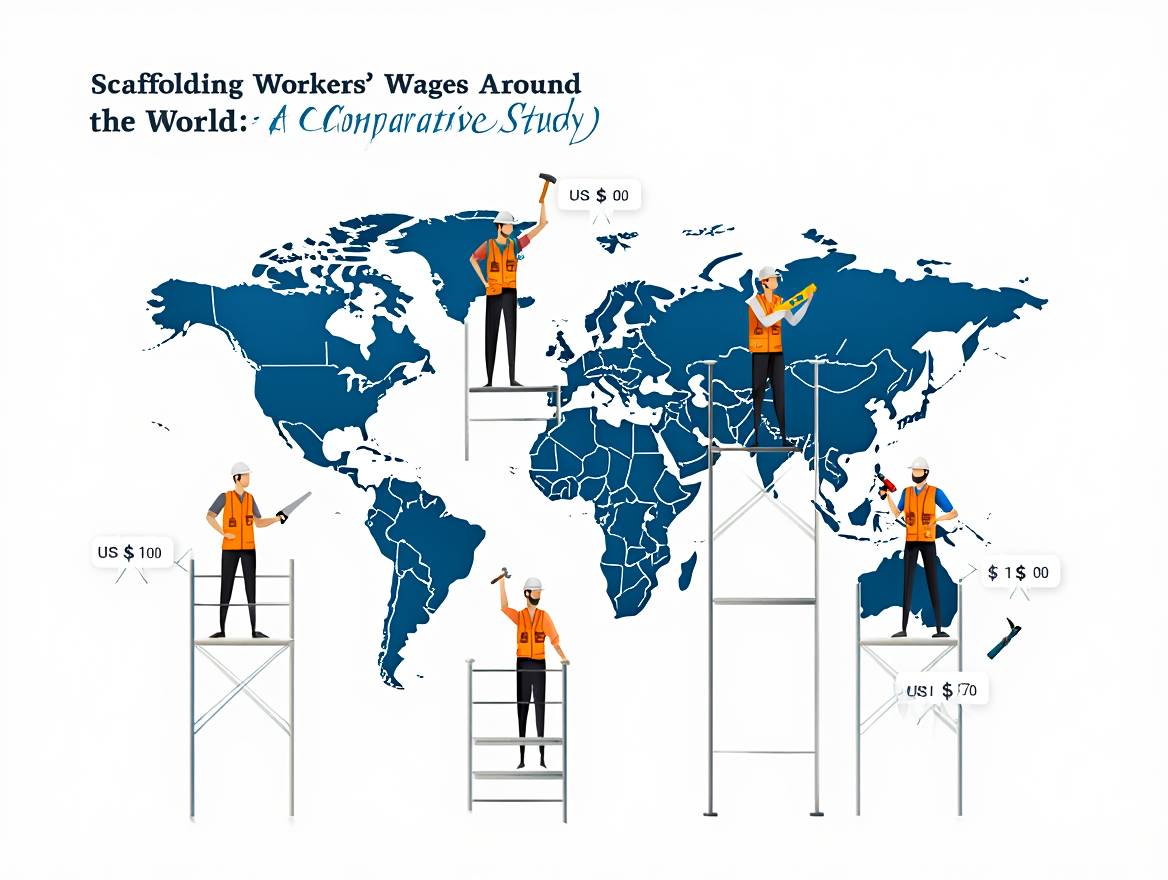
Tuesday August 12, 2025
Introduction
Scaffolders are key workers in the construction industry, tasked with erecting and maintaining scaffolding to ensure safe access for workers and the structural stability of buildings. Given the hazardous nature of the job, fair compensation and benefits are vital. This article examines scaffolder wages, working conditions, and legal frameworks in various countries worldwide, focusing on Europe, the United States, and Australia.
1. Scaffolder Wages in Different Countries
1.1. United States
In the U.S., scaffolders typically earn between $40,000 and $60,000 annually, depending on the state, location, and experience. States with high living costs like California and New York often offer higher wages. Scaffolders in the U.S. are generally covered by workers' compensation insurance, social security, and health benefits.
1.2. United Kingdom
In the UK, scaffolders earn an average of £25,000 to £35,000 per year. In larger cities such as London, wages can be higher due to the cost of living and increased demand for construction projects. Scaffolders are also entitled to National Health Service (NHS) coverage, pension schemes, and additional employment benefits.
1.3. Germany
In Germany, scaffolders earn between €30,000 and €45,000 annually, depending on the region and the type of projects. Cities like Munich and Frankfurt, where construction activity is high, tend to offer higher wages. Workers in Germany also benefit from extensive worker protection laws, including health insurance and retirement plans.
1.4. France
In France, scaffolders typically earn between €25,000 and €38,000 annually. Wages can be higher in urban areas like Paris or the south of France, where construction projects are more frequent. Scaffolders in France are covered by health insurance, accident insurance, and other benefits under the French social security system.
1.5. Italy
In Italy, scaffolders earn between €22,000 and €35,000 annually. Wages can vary depending on experience and location, with higher salaries offered in major cities like Rome and Milan. However, the Italian construction industry also faces challenges like informal work, which can affect pay rates and job security.
1.6. Spain
In Spain, scaffolders generally earn between €18,000 and €30,000 per year. The wages are lower in comparison to other European countries, partly due to higher unemployment rates and smaller-scale construction projects in many regions. However, larger cities like Madrid and Barcelona offer better wages due to more significant construction demand.
1.7. Netherlands
In the Netherlands, scaffolders earn between €35,000 and €50,000 annually. The country has some of the highest safety standards in the world, and workers are required to undergo thorough training and certification. Scaffolders benefit from strong labor laws, including health insurance, pension plans, and paid leave.
1.8. Sweden
In Sweden, scaffolders typically earn between SEK 30,000 and SEK 45,000 per month (approximately €35,000 to €50,000 annually). Sweden’s strong labor protections, high safety standards, and comprehensive social services provide scaffolders with significant benefits, including healthcare and retirement plans.
1.9. Eastern Europe (Poland, Romania, etc.)
In countries like Poland and Romania, scaffolders earn considerably lower wages, ranging from €12,000 to €20,000 annually. However, the cost of living is lower in these countries, and the construction industry is growing. Many workers in Eastern Europe seek opportunities abroad, especially in Western Europe, for higher-paying jobs.
1.10. Middle East (UAE, Saudi Arabia)
In countries like Saudi Arabia and the UAE, scaffolders can earn between $30,000 and $50,000 annually. Although wages are higher, the working conditions can be more challenging, and workers often live in temporary accommodations. However, they receive benefits such as free housing, meals, and health insurance.
2. Challenges and Job Risks
Scaffolders face various risks, including falls, muscle injuries, and respiratory issues from dust exposure. To mitigate these dangers, many countries have strict safety regulations, including the use of personal protective equipment (PPE) such as helmets, harnesses, and gloves. Safety training is often mandatory, and scaffolders are required to pass certifications to ensure workplace safety.
3. Training and Required Skills
In many countries, scaffolders are required to complete specialized training to qualify for the job. In the UK, scaffolders must obtain a CITB (Construction Industry Training Board) certificate. In the U.S., many states require OSHA (Occupational Safety and Health Administration) training. These certifications ensure scaffolders have the necessary skills and safety knowledge to perform the job safely.
4. Future Job Market for Scaffolders
With the growth of the construction industry worldwide, the demand for scaffolders is expected to remain strong. However, there is a growing emphasis on safety, and scaffolders must stay updated with certifications and regulations to remain employable in the future. As construction booms in developing countries and urbanization increases globally, the need for skilled scaffolders will continue to rise.
Conclusion
Scaffolders' wages vary significantly across countries, reflecting local economic conditions, construction demand, and safety regulations. Countries with strong labor laws, high safety standards, and robust construction sectors tend to offer better pay and working conditions. Scaffolders must undergo adequate training to ensure safety and increase their chances of securing well-paying jobs in the future.

ارسال نظر